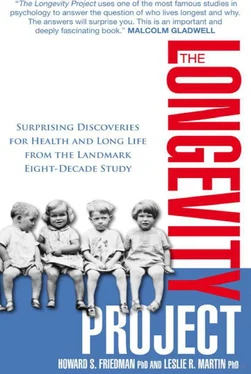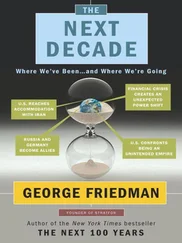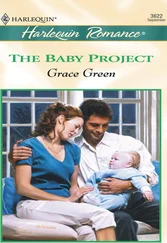3 – neither accurate nor inaccurate
4 – moderately accurate
5 – very accurate
2. I leave my belongings around.
1 – very inaccurate
2 – moderately inaccurate
3 – neither accurate nor inaccurate
4 – moderately accurate
5 – very accurate
3. I actually get cold when I think of something cold.
1 – very inaccurate
2 – moderately inaccurate
3 – neither accurate nor inaccurate
4 – moderately accurate
5 – very accurate
4. I enjoy planning my work in detail.
1 – very inaccurate
2 – moderately inaccurate
3 – neither accurate nor inaccurate
4 – moderately accurate
5 – very accurate
5. I make a mess of things.
1 – very inaccurate
2 – moderately inaccurate
3 – neither accurate nor inaccurate
4 – moderately accurate
5 – very accurate
6. I get chores done right away.
1 – very inaccurate
2 – moderately inaccurate
3 – neither accurate nor inaccurate
4 – moderately accurate
5 – very accurate
7. I have sometimes had to tell a lie.
1 – very inaccurate
2 – moderately inaccurate
3 – neither accurate nor inaccurate
4 – moderately accurate
5 – very accurate
8. I often forget to put things back in their proper place.
1 – very inaccurate
2 – moderately inaccurate
3 – neither accurate nor inaccurate
4 – moderately accurate
5 – very accurate
9. I like order.
1 – very inaccurate
2 – moderately inaccurate
3 – neither accurate nor inaccurate
4 – moderately accurate
5 – very accurate
10. I shirk my duties.
1 – very inaccurate
2 – moderately inaccurate
3 – neither accurate nor inaccurate
4 – moderately accurate
5 – very accurate
11. I follow a schedule.
1 – very inaccurate
2 – moderately inaccurate
3 – neither accurate nor inaccurate
4 – moderately accurate
5 – very accurate
12. I am persistent in the accomplishment of my work and ends.
1 – very inaccurate
2 – moderately inaccurate
3 – neither accurate nor inaccurate
4 – moderately accurate
5 – very accurate
How to compute the total score:
Each item scores from 1 to 5. But for items 2, 5, 8, and 10, you need to reverse the scores. So if you said that “I leave my belongings around” was “very inaccurate” in describing you (a 1), change your score to its opposite, which is a 5. If you gave yourself a 2 you would change this to a 4 and so on. If you said this was neither accurate nor inaccurate, you would leave your score as it is–a 3.
Then eliminate item 3 and item 7. Item 3 (“I actually get cold when I think of something cold”) is an irrelevant filler item. Item 7 is a lie scale, in more than one sense of the term. For the remaining ten items, simply sum your scores.
A total score will fall somewhere between 10 and 50. This scale is a good measure of conscientiousness. Total scores between 10 and 24 indicate very low conscientiousness (the lowest quartile or 25 percent in a recent sample of adults). Scores between 37 and 50 suggest exceptionally high conscientiousness.
Another way to understand your own conscientiousness and to make it a more valid assessment is to get the viewpoint of someone else who knows you well. (Remember that in 1921 and 1922, Dr. Terman didn’t ask the children about their personalities. Instead he asked their parents and teachers.) People who know you well are generally good judges of your personality, and sometimes the perspective of someone else can be enlightening, helping us to see ourselves more objectively. So use the same scale, but this time, have a friend rate you.
Conscientious Adults: Then and Now
If our unexpected discovery about childhood conscientiousness and its relevance to long life is not a fluke, then we should also be able to find confirming evidence by studying conscientious adults.
Almost two decades after starting, in the summer of 1940, Dr. Terman approached Patricia and the other members of his select study again. He gave them an extensive new series of tests and measures with such questions as “Are you thrifty and careful about making loans?” and “How persistent are you in the accomplishment of your ends?” From these results we worked for months to construct and validate a new series of personality scales. At times, we also incorporated similar questions that Terman asked the participants in 1950.
Studies of health across the life span face an intriguing dilemma. In order to see whether personality in childhood and young adulthood predicts long life, a result that can’t be seen until decades later, we necessarily need to use “old” data. In our case, information from the early and mid-twentieth century is being used to predict longevity into the twenty-first century. But years later, new, improved measures are in vogue, and the dusty old measures and techniques are likely subject to criticism. As Dale Carnegie put it, “Any fool can criticize, condemn and complain, and most fools do.” 6 6 The quote “Any fool can criticize…” comes from Dale Carnegie’s 1936 book How to Win Friends and Influence People. It is often erroneously attributed to Benjamin Franklin.
Short of time travel, how can we be sure that the measures we have from the 1920s, 1940s, and 1950s reflect what we understand about personality today? What at first seemed simple gradually became more and more complex. We decided to administer the Terman questionnaire items to a contemporary sample of people. More than a half century after Dr. Terman measured the personality of Patricia at thirty years old, we recruited a new group of young adults in California and asked them the exact same questions. We also recruited a sample of parents to rate their young children on Terman’s scales, just as parents of the Terman participants had done in the 1920s.
We then gave these new participants some modern, well-validated personality tests. Through a series of statistical analyses, we were able to check the old data against new data, thereby creating valid, modern personality measures for Patricia and her associates. It was almost as if we had gone back decades and measured Jess Oppenheimer’s personality by finding a modern-day doppelganger. We did this in the technical, statistical way, and then, just to be sure, we examined all the scale items in a rational, commonsense manner. Fortunately, all of the data analyses fit together quite well. 7 7 For the details of our scale validation using modern measures, see for example L. R. Martin and H. S. Friedman, “Comparing Personality Scales across Time: An Illustrative Study of Validity and Consistency in LifeSpan Archival Data,” Journal of Personality 68 (2000): 85-110.
Dr. Terman’s approach to personality holds up nicely and can help us predict our own futures.
Doing the right statistical analyses in such attempts to predict long life is much more difficult than might be imagined. Long-term longitudinal studies are especially challenging because participants come and go, rejoin or drop out, disappear or are discovered, and live or die. In addressing these and related statistical issues, we were fortunate to have Professor Joseph Schwartz as a key research collaborator. Joe has one of best analytic minds in this field.
Conscientiousness, which was the best predictor of longevity when measured in childhood, also turned out to be the best personality predictor of long life when measured in adulthood. The young adults who were thrifty, persistent, detail oriented, and responsible lived the longest. Patricia was one of these, having told Dr. Terman that she enjoyed “planning [her] work in detail” and tended to “drive [herself] steadily.” When asked about how she typically pursued goals, she indicated that she was persistent and that she had “definite purposes.” Patricia also reported being “thrifty and careful about making loans” and not at all impulsive. In fact, she had done very well in college and was expecting to have a highly successful career.
Читать дальше











